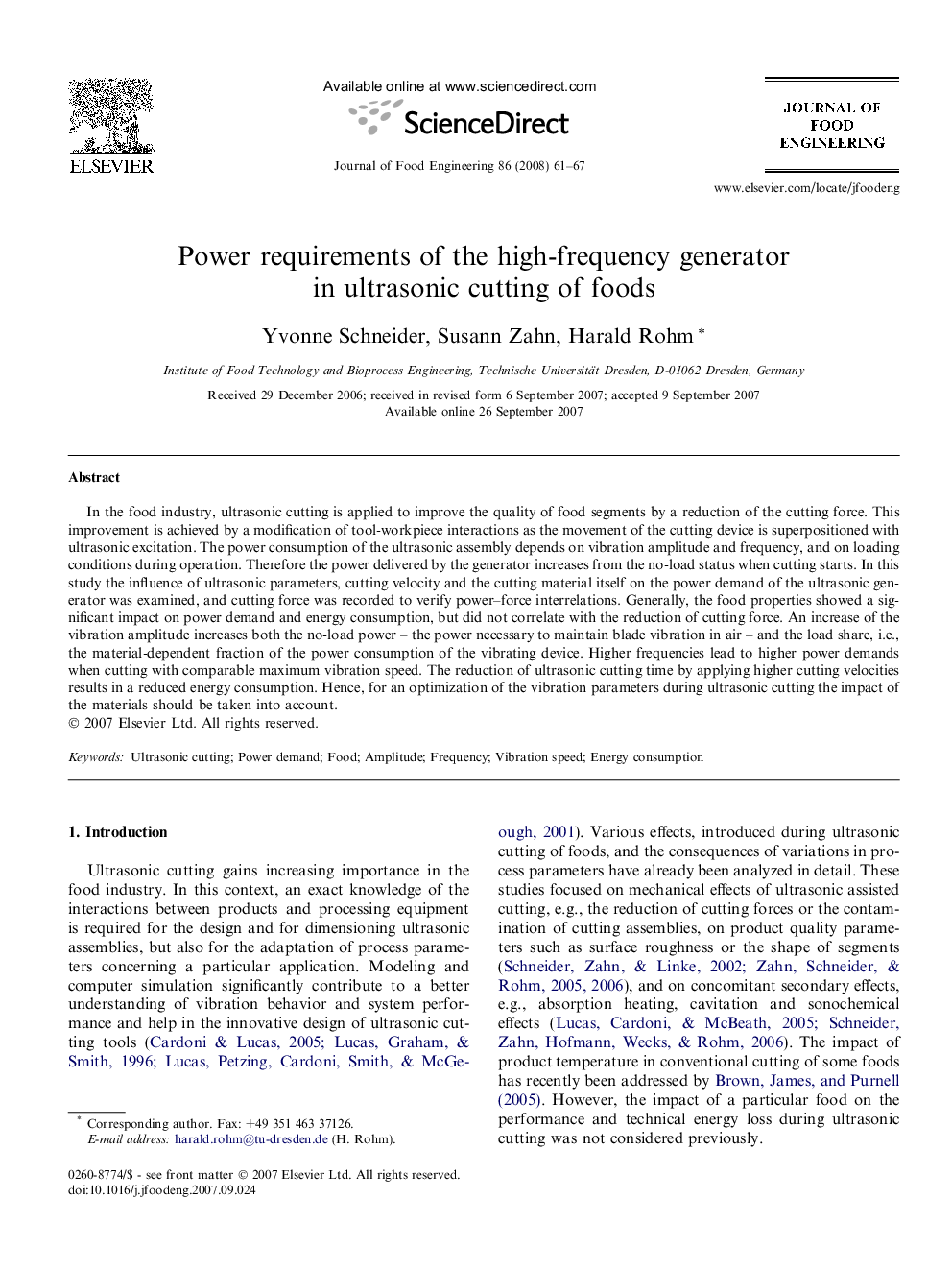| کد مقاله | کد نشریه | سال انتشار | مقاله انگلیسی | نسخه تمام متن |
|---|---|---|---|---|
| 225402 | 464492 | 2008 | 7 صفحه PDF | دانلود رایگان |

In the food industry, ultrasonic cutting is applied to improve the quality of food segments by a reduction of the cutting force. This improvement is achieved by a modification of tool-workpiece interactions as the movement of the cutting device is superpositioned with ultrasonic excitation. The power consumption of the ultrasonic assembly depends on vibration amplitude and frequency, and on loading conditions during operation. Therefore the power delivered by the generator increases from the no-load status when cutting starts. In this study the influence of ultrasonic parameters, cutting velocity and the cutting material itself on the power demand of the ultrasonic generator was examined, and cutting force was recorded to verify power–force interrelations. Generally, the food properties showed a significant impact on power demand and energy consumption, but did not correlate with the reduction of cutting force. An increase of the vibration amplitude increases both the no-load power – the power necessary to maintain blade vibration in air – and the load share, i.e., the material-dependent fraction of the power consumption of the vibrating device. Higher frequencies lead to higher power demands when cutting with comparable maximum vibration speed. The reduction of ultrasonic cutting time by applying higher cutting velocities results in a reduced energy consumption. Hence, for an optimization of the vibration parameters during ultrasonic cutting the impact of the materials should be taken into account.
Journal: Journal of Food Engineering - Volume 86, Issue 1, May 2008, Pages 61–67